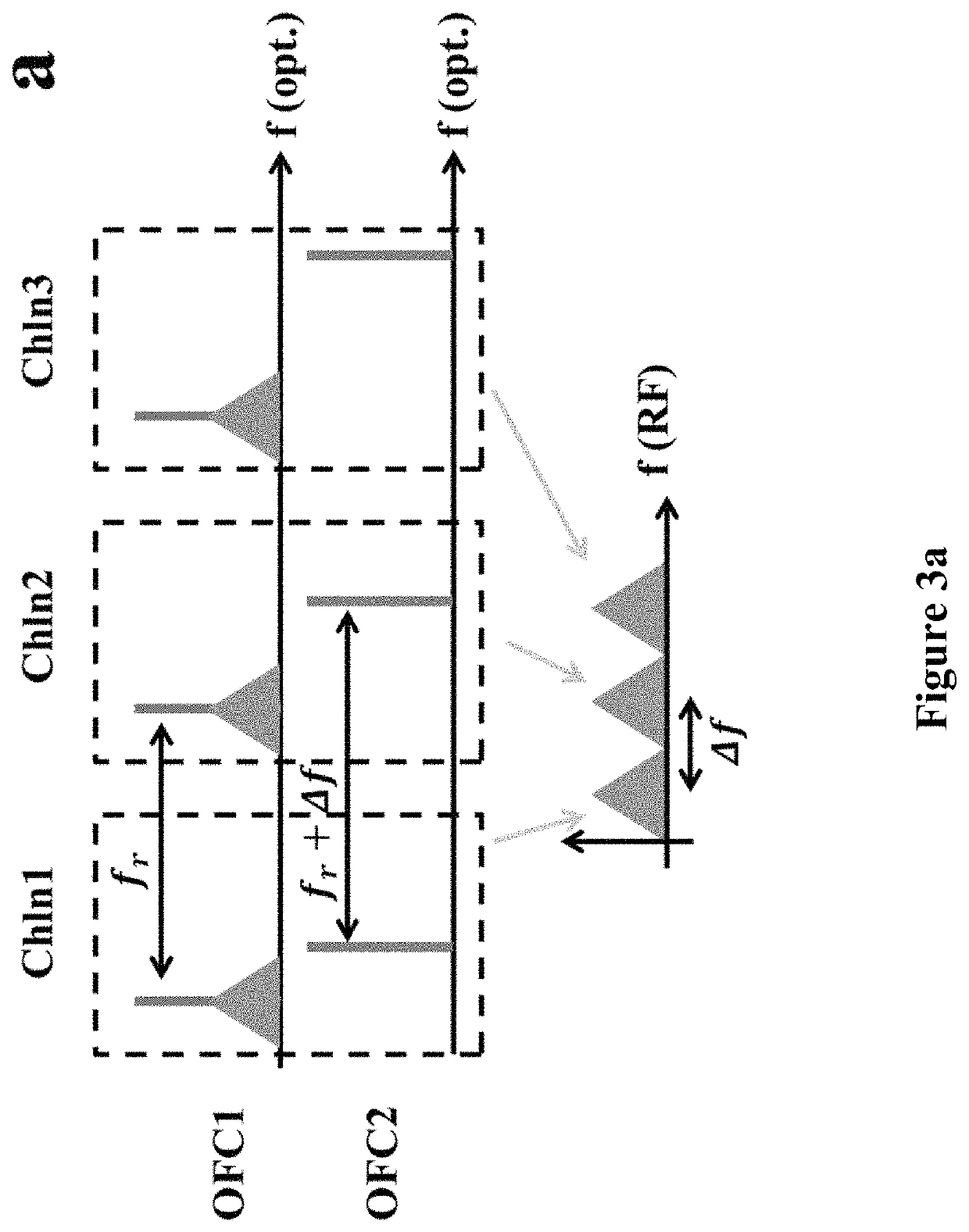Integrated photonic microwave transceiver system
a photonic microwave and transceiver technology, applied in the field of photonic systems, can solve the problems of system limitations and extremely difficult conventional techniques
- Summary
- Abstract
- Description
- Claims
- Application Information
AI Technical Summary
Benefits of technology
Problems solved by technology
Method used
Image
Examples
Embodiment Construction
Overview
[0029]FIG. 1 schematically illustrates an embodiment of a photonic microwave transceiver based on F. Laghezza and et al., “Photonics-Assisted Multiband RF Transceiver for Wireless Communications,” J. Lightwave Technol. 32, 2896-2904 (2014). On the transmitter end, the input radio frequency (RF) information is modulated into the optical domain by a Mach-Zehnder modulator (MZM) at the sidebands of each optical carrier of an optical source—a mode locked laser (MLL). Once this optical signal is transformed back to the RF domain through an optical-to-electrical convertor (OEC), for example a photodetector (PD), the sideband of a particular comb line heterodynes with its neighboring comb lines, effectively replicating the input RF information to multiple RF carrier frequencies, whose separation equals the repetition rate of the MLL. The output of the photodetector is split into multiple parts, each with an RF bandpass filter (BPF) to select a desired segment of the input RF inform...
PUM
| Property | Measurement | Unit |
|---|---|---|
| carrier frequency | aaaaa | aaaaa |
| frequency | aaaaa | aaaaa |
| frequency | aaaaa | aaaaa |
Abstract
Description
Claims
Application Information
 Login to View More
Login to View More - R&D
- Intellectual Property
- Life Sciences
- Materials
- Tech Scout
- Unparalleled Data Quality
- Higher Quality Content
- 60% Fewer Hallucinations
Browse by: Latest US Patents, China's latest patents, Technical Efficacy Thesaurus, Application Domain, Technology Topic, Popular Technical Reports.
© 2025 PatSnap. All rights reserved.Legal|Privacy policy|Modern Slavery Act Transparency Statement|Sitemap|About US| Contact US: help@patsnap.com



